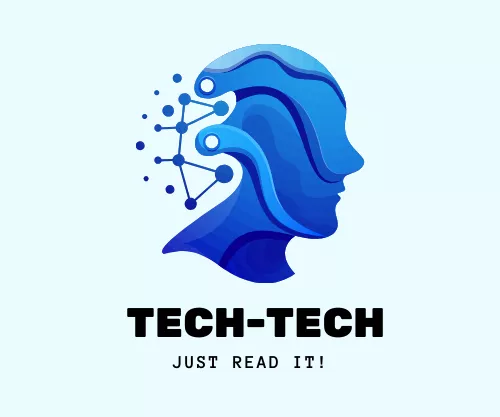For those committed to ensuring the reliability and scalability of their digital services, “The Site Reliability Workbook: Practical Ways to Implement SRE” from O’Reilly is an essential companion. Edited by Betsy Beyer, Niall Richard Murphy, David K. Rensin, Kent Kawahara, and Stephen Thorne, this book offers practical guidance and actionable strategies to implement Site Reliability Engineering (SRE) principles in your organization. Here’s a detailed summary of the book’s 21 chapters, each filled with insights and practical advice.

READ THE FULL BOOK ONLINE : https://google.github.io/building-secure-and-reliable-systems/raw/toc.html
Chapter 1: Introduction
The workbook begins by reinforcing the foundational concepts of SRE introduced in the original “Site Reliability Engineering” book. It sets the stage for a more hands-on approach to applying these principles.
Key Takeaway: Understanding the practical aspects of SRE and how to begin implementing these strategies in your organization.
Quote: “SRE is a journey, and this workbook is your guide.”
Chapter 2: Building and Implementing SLOs
This chapter delves into the process of creating and maintaining Service Level Objectives (SLOs), which are critical for measuring and managing service reliability.
Key Takeaway: Clear and actionable SLOs are essential for driving improvements in service reliability.
Quote: “SLOs are the backbone of SRE practices.”
Chapter 3: Monitoring
Focuses on establishing effective monitoring systems to ensure visibility into service performance and health.
Key Takeaway: Comprehensive monitoring is crucial for proactive incident detection and resolution.
Quote: “What gets measured gets managed.”
Chapter 4: Alerting on SLOs
Explores best practices for setting up alerts based on SLOs, ensuring that teams are notified of issues before they impact users.
Key Takeaway: Effective alerting mechanisms help maintain service reliability and prevent user impact.
Quote: “Alerts should be actionable and noise-free.”
Chapter 5: Incident Response
Provides detailed guidance on building robust incident response processes, including incident detection, management, and post-incident analysis.
Key Takeaway: A structured incident response process minimizes downtime and accelerates recovery.
Quote: “Every incident is an opportunity to learn and improve.”
Chapter 6: Postmortem Culture
Discusses the importance of conducting blameless postmortems to learn from failures and prevent recurrence.
Key Takeaway: Blameless postmortems foster a culture of continuous improvement and resilience.
Quote: “Failure is inevitable; learning from it is not.”
Chapter 7: Testing for Reliability
Covers various testing methodologies, including chaos engineering and fault injection, to ensure systems can withstand failures.
Key Takeaway: Regular testing is essential for building resilient systems.
Quote: “Test early, test often.”
Chapter 8: Capacity Planning
Focuses on techniques for forecasting demand and planning capacity to ensure systems can handle expected loads.
Key Takeaway: Proactive capacity planning ensures that services remain reliable under varying loads.
Quote: “Capacity planning is about staying ahead of demand.”
Chapter 9: Reducing Toil
Emphasizes the need to identify and eliminate toil through automation, allowing engineers to focus on high-value work.
Key Takeaway: Reducing toil improves efficiency and job satisfaction.
Quote: “Eliminating toil is about creating more time for innovation.”
Chapter 10: SRE Engagement Models
Explores different engagement models for SREs to work effectively with development and operations teams.
Key Takeaway: Effective engagement models enhance collaboration and drive reliability improvements.
Quote: “Collaboration is the key to successful SRE engagements.”
Chapter 11: Implementing SRE in Your Organization
Provides a step-by-step guide to introducing and scaling SRE practices within an organization.
Key Takeaway: A phased approach is essential for successful SRE implementation.
Quote: “Start small, think big, move fast.”
Chapter 12: Reliability Metrics and Monitoring
Discusses the importance of selecting and tracking the right metrics to measure reliability and performance.
Key Takeaway: Metrics drive visibility and continuous improvement.
Quote: “What gets measured gets improved.”
Chapter 13: Automation and Release Engineering
Covers best practices for automating repetitive tasks and establishing robust release engineering processes.
Key Takeaway: Automation reduces errors and accelerates deployment cycles.
Quote: “Automate everything that can be automated.”
Chapter 14: Software Engineering for SRE
Focuses on the intersection of software engineering and SRE, emphasizing tool development and automation.
Key Takeaway: Engineering excellence is critical for building reliable systems.
Quote: “Engineering drives reliability.”
Chapter 15: Managing SRE Teams
Provides insights into managing SRE teams, including hiring, training, and fostering a culture of reliability.
Key Takeaway: Strong leadership and a supportive culture are vital for successful SRE teams.
Quote: “Great teams build great systems.”
Chapter 16: Case Studies
Presents real-world case studies that illustrate the application of SRE practices and their impact on service reliability.
Key Takeaway: Case studies offer valuable lessons and practical insights.
Quote: “Learn from others’ experiences.”
Chapter 17: SRE Tools and Automation
Discusses various tools and automation techniques used by SREs to enhance reliability and efficiency.
Key Takeaway: The right tools can significantly improve SRE practices.
Quote: “Tools amplify human capabilities.”
Chapter 18: Managing Risk
Explores strategies for managing risk in SRE, including the use of error budgets and risk analysis techniques.
Key Takeaway: Effective risk management balances innovation and reliability.
Quote: “Managing risk is about making informed decisions.”
Chapter 19: The Future of SRE
Reflects on the future of SRE, highlighting emerging trends and potential advancements in the field.
Key Takeaway: Continuous learning and adaptation are essential for the future of SRE.
Quote: “The future of SRE lies in our ability to innovate and adapt.”
Chapter 20: Practical Exercises and Workshops
Provides practical exercises and workshops to help teams apply SRE principles in real-world scenarios.
Key Takeaway: Hands-on practice is crucial for mastering SRE techniques.
Quote: “Practice makes perfect.”
Chapter 21: Conclusion
The final chapter wraps up the workbook, emphasizing the importance of continuous improvement and the ongoing evolution of SRE practices.
Key Takeaway: SRE is a journey of continuous improvement and adaptation.
Quote: “The journey of SRE is ongoing, and the best is yet to come.”
Conclusion
“The Site Reliability Workbook” is an indispensable resource for anyone looking to implement SRE principles in their organization. Its practical guidance, real-world case studies, and actionable strategies provide a roadmap for achieving and maintaining service reliability. Whether you’re new to SRE or looking to refine your practices, this workbook offers valuable insights and tools to help you succeed.

READ THE FULL BOOK ONLINE : https://google.github.io/building-secure-and-reliable-systems/raw/toc.html
Further Reading
For those interested in furthering their knowledge of SRE and related topics, consider these books:
- “Site Reliability Engineering: How Google Runs Production Systems” by Betsy Beyer, Chris Jones, Jennifer Petoff, and Niall Richard Murphy
- “The Phoenix Project” by Gene Kim, Kevin Behr, and George Spafford
- “The DevOps Handbook” by Gene Kim, Jez Humble, Patrick Debois, and John Willis
Would you like summaries of any of these books? Let us know in the comments below!

